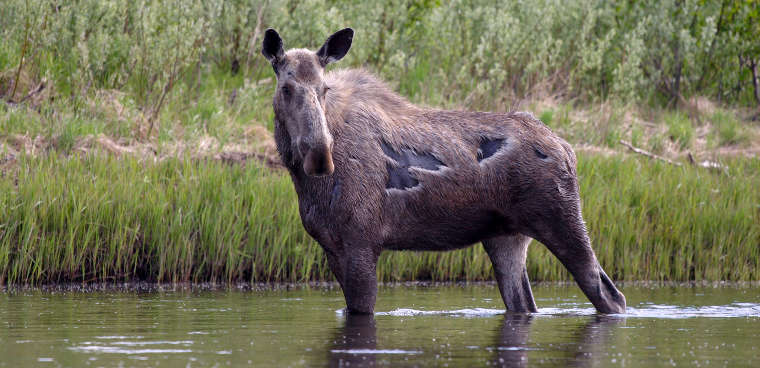Mulchatna Wild & Scenic River

Along the Mulchatna Wild & Scenic River

Rafters on the Mulchatna
With headwaters in the Chigmit Mountains above Turquoise Lake, the Mulchatna River flows westward through glacier-carved valleys in the foothills across Lake Clark National Park, joining with the Chilikadrotna after 49 miles before crossing another 113 miles through low rolling hills and wetlands to empty into the Nushagak River. The Nushagak flows southwest from there for 104 miles and eventually drains into Nushagak Bay, an arm of Bristol Bay on the Bering Sea. The Wild & Scenic designation only applies to the 24-mile section of the Mulchatna that lies across Lake Clark National Park.
The upper 50 miles or so of the Mulchatna are rated Class II and II with portages required regularly along the route. Sometimes the upper river is too low to float. The canyon is narrow, the landscape rugged and the possibility of outside help almost non-existent: only a few groups float the river in a normal year. The upper river is also known for large rocks, ledge drops and washing machine rapids. From Bonanza Creek on downstream, that rating changes to mostly Class I and the river is almost always floatable. Through the forest, the river often narrows and flows more quickly, cutting new channels almost daily. When this is happening short, dangerous portages can be required almost anywhere along the river. Usually the primary dangers downstream of Bonanza Creek are the bears, possible logjams and overhanging vegetation. Most float trips take at least a week but longer trips are easily arranged. Moose are regular sights along the river and the valleys are frequented by the Mulchatna Caribou Herd.

Typical scene along the Mulchatna